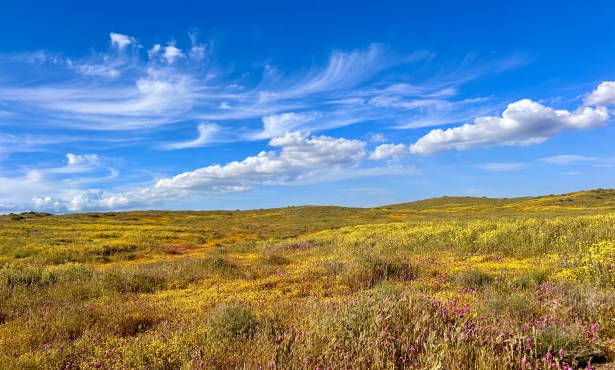Santa Barbara Storm Chaser Recounts a Close Call
Gwen Rigby Survived a Tornado Hitting and Rolling Her Van

When I moved to Santa Barbara in 1964, I missed the four distinct seasons. I mostly missed the clouds. So, when a 2005 newspaper article featured a fellow in Lompoc who chased storms, I inquired immediately. By that time, I had stopped working in the wine industry and in high schools; I only taught part-time at Santa Barbara City College, which allowed me to travel to the Midwest at the height of tornado season.
“Stay safe,” my friends would say. I told them that storm-chase leaders always make sure that we are a safe distance from tornados and that we have an escape route if necessary. It didn’t happen that way this May near Linwood, Kansas.
This was my 12th year chasing storms. Most of those years were devoid of tornados because sightings are not a given. It takes just the right amount of shear, lift, instability, and moisture for one to form. Tour leaders often drive 400-600 miles a day to reach the most promising destinations, continually checking National Weather Service reports on a computer bolted next to their seat.
This year I went with Silver Lining Tours, one of the most highly regarded tour groups. The owner and leader, Roger Hill, is in Guinness World Records for the most tornadoes seen (over 650). He also has a sterling reputation for safety. The fact that two of his vans were tossed by a tornado was an aberration and shows that Mother Nature still insists on unpredictability.
On May 28, we drove toward eastern Kansas. A large front was supposed to develop, and there was a possibility of a super cell. Hill predicted a large tornado and spotted the beginnings of one, a mesocyclone, to the south of our vans. We kept changing position to be in front of the turbulence and to watch the tornado formation. Heavy rain made spotting difficult.
Just before 6 p.m., we went down a county road but decided to turn back. The mesocyclone was getting too close for comfort. The winds abruptly picked up and things started blowing sideways. “Debris is falling! Debris is falling!” Hill shouted. He knew we were in danger before he saw the hoary gray funnel upon us. It was a satellite tornado that dropped down about 50 yards from us. “Stop! Stop!” Then, bang!
The satellite tornado, said to be an EF 2 (winds of 111-135 mph), had blown our van off the road. We rolled two times, stopped, and rolled once more until a ditch caught us. The van was left upside down, and most of us were hanging by our seatbelts. One by one, we crawled out.
The van behind us was hit harder. It was picked up and carried over a fence, and its passengers were more seriously injured. Twelve of us were taken to emergency rooms. Two days later, two were still in the hospital. All others were released that night.
The house and barn just beyond our vans were demolished. This satellite tornado merged with the main tornado and went on to hit Lawrence, Linwood, and a part of Kansas City. It is said to have reached nearly a mile in width. It was only one of over 300 destructive tornadoes in Midwest this winter and spring.
When I finally was able to rest at the hotel, I thought I had done the ultimate — been inside a tornado — and didn’t need to go chasing storms again. But the lure of being outside with thunder, lightning, and twirly things is almost irresistible. In the Midwest in spring, all you have to do is step outside and watch the potent sky.



